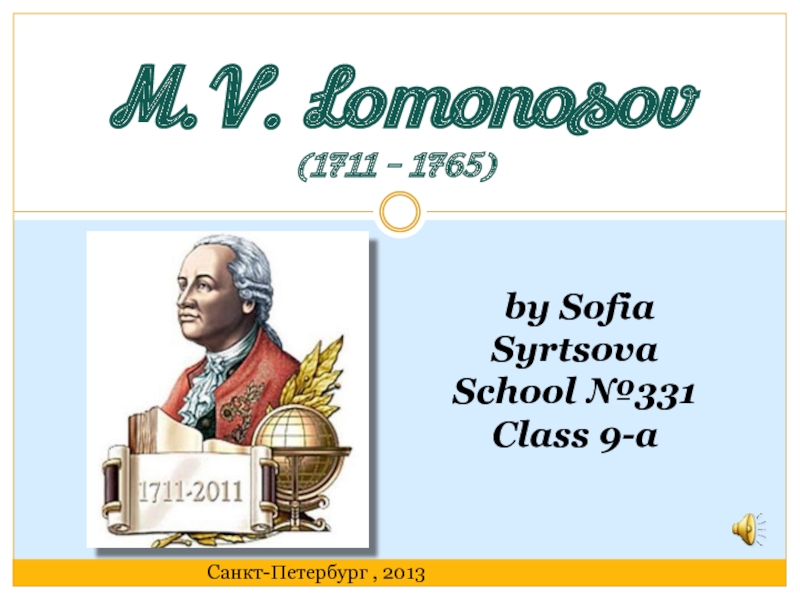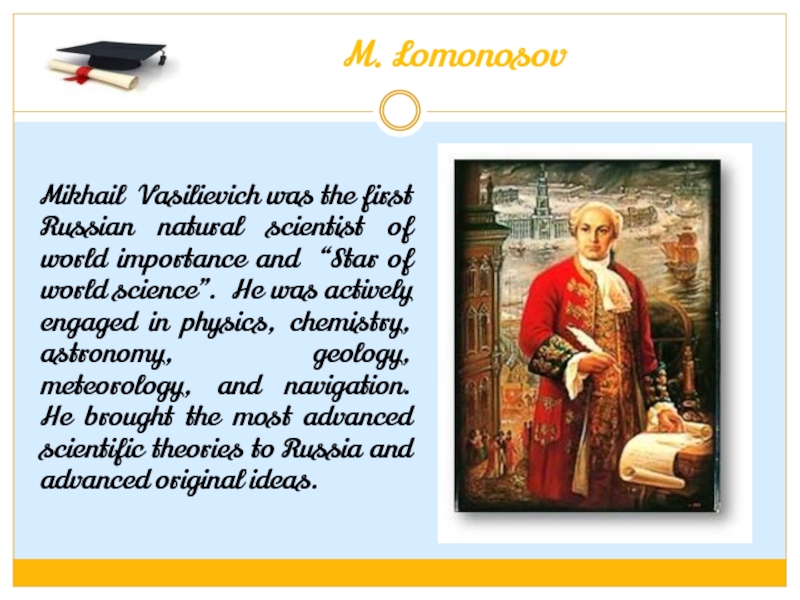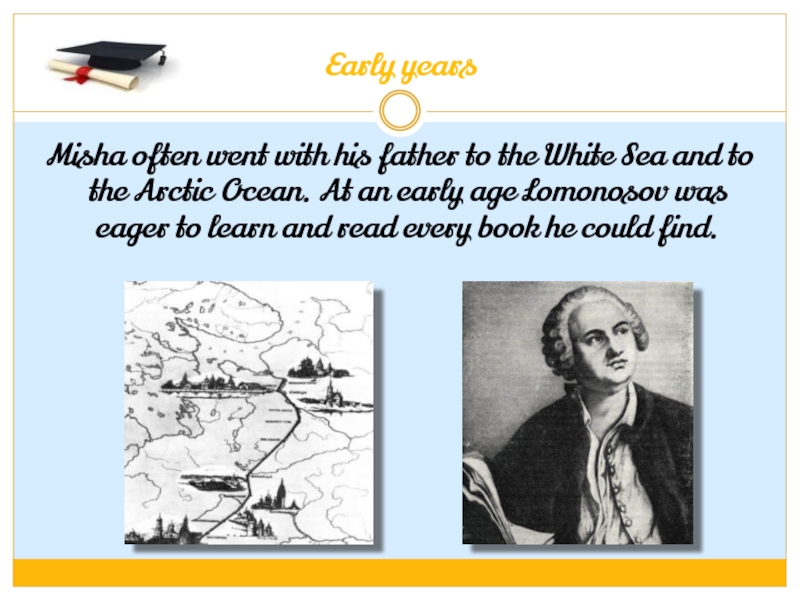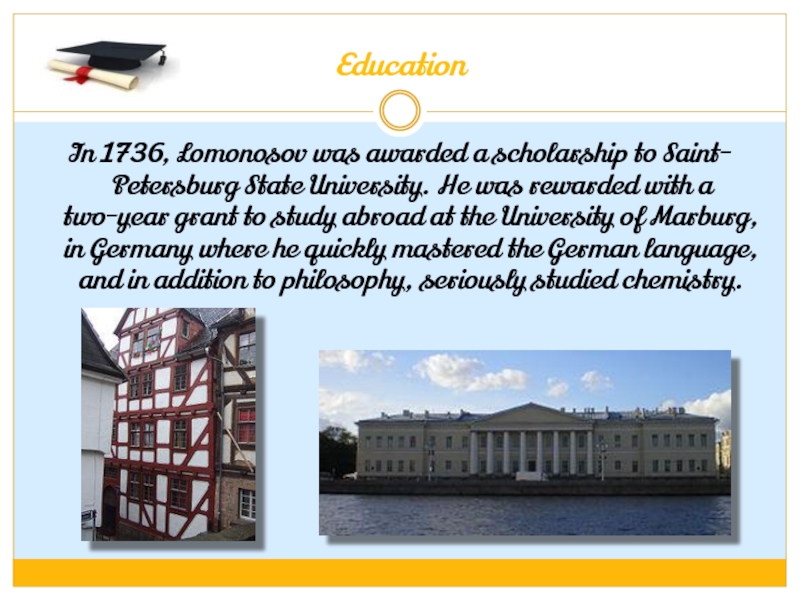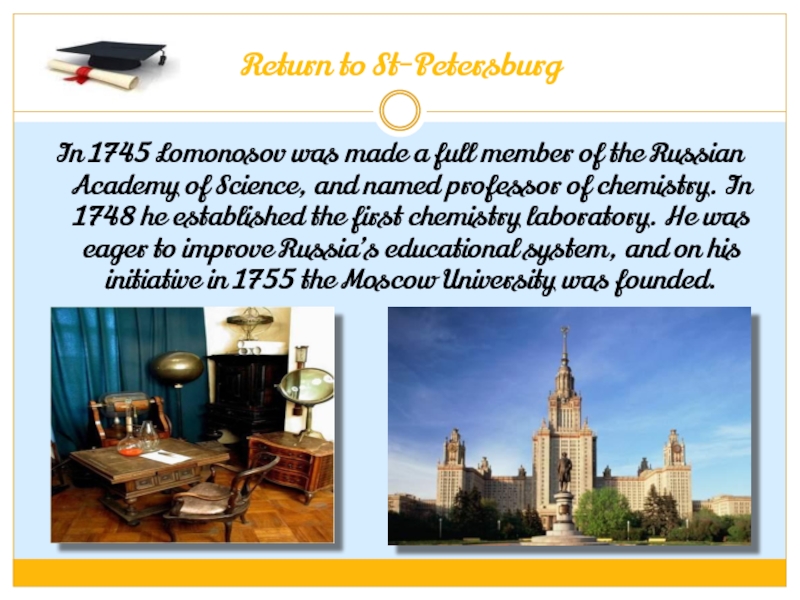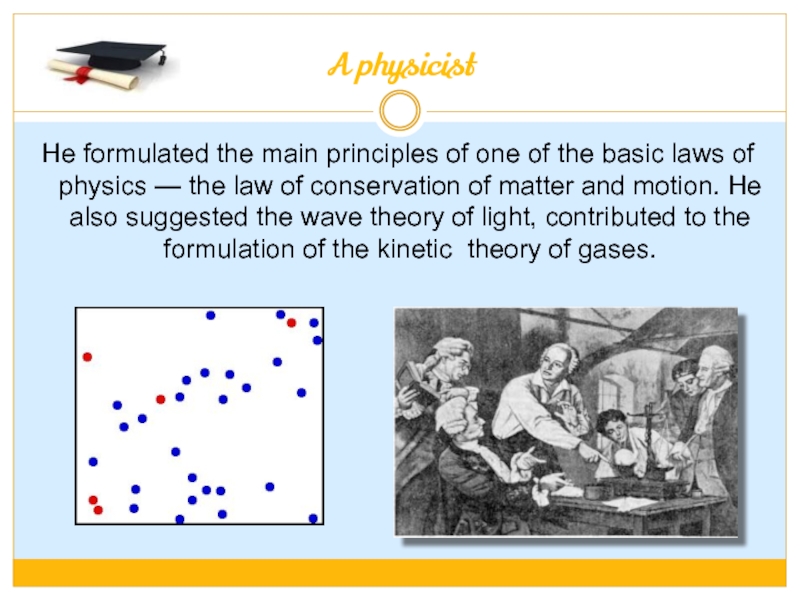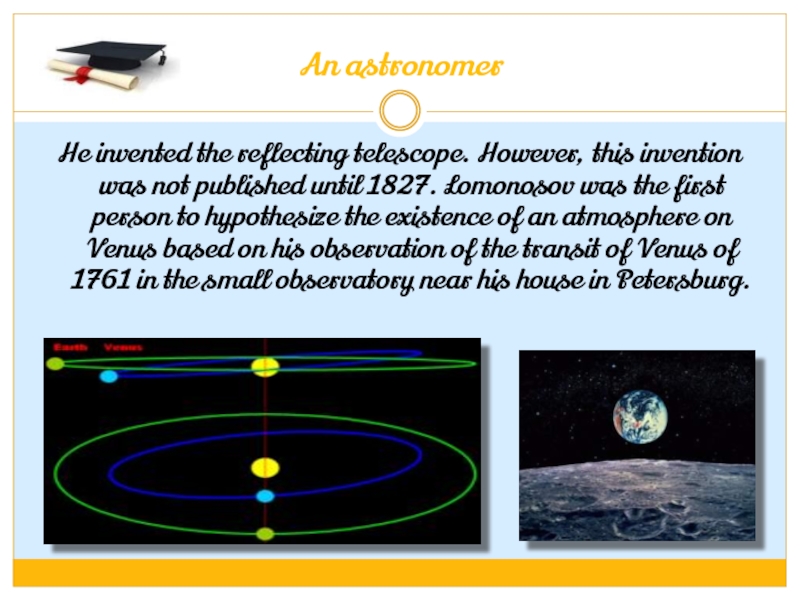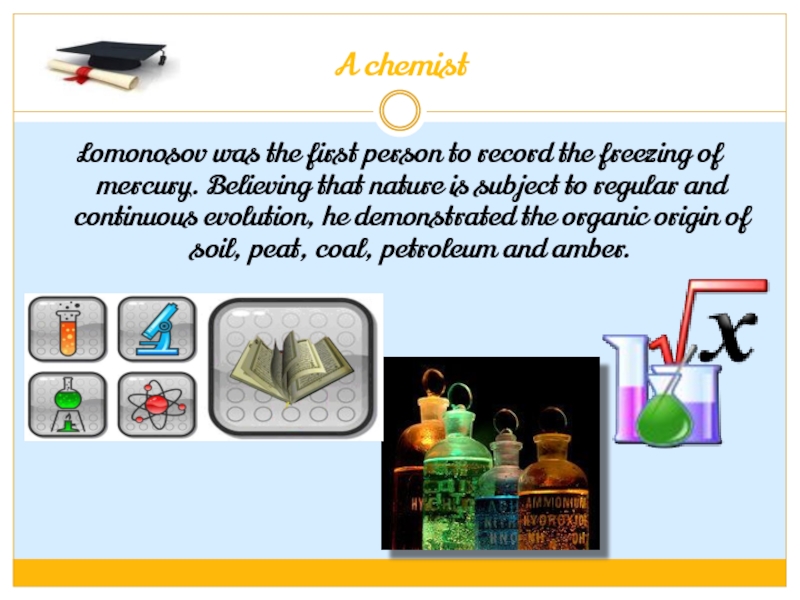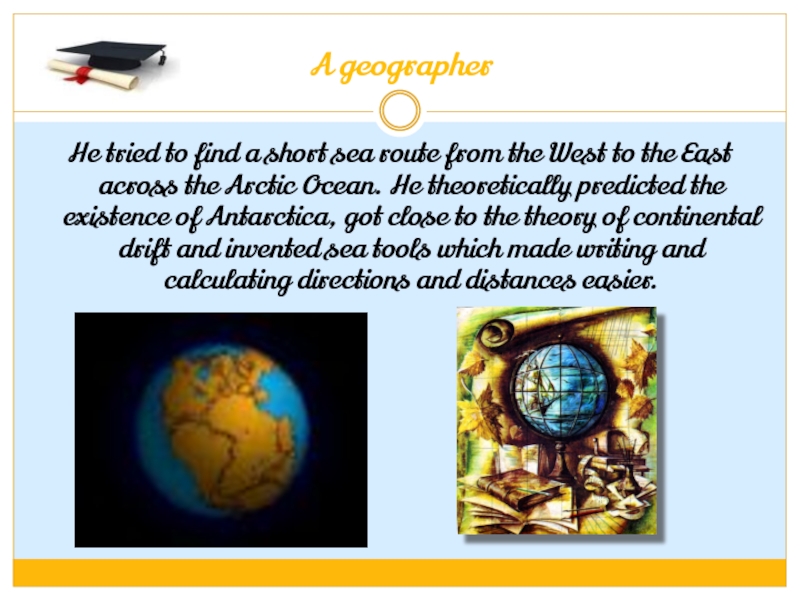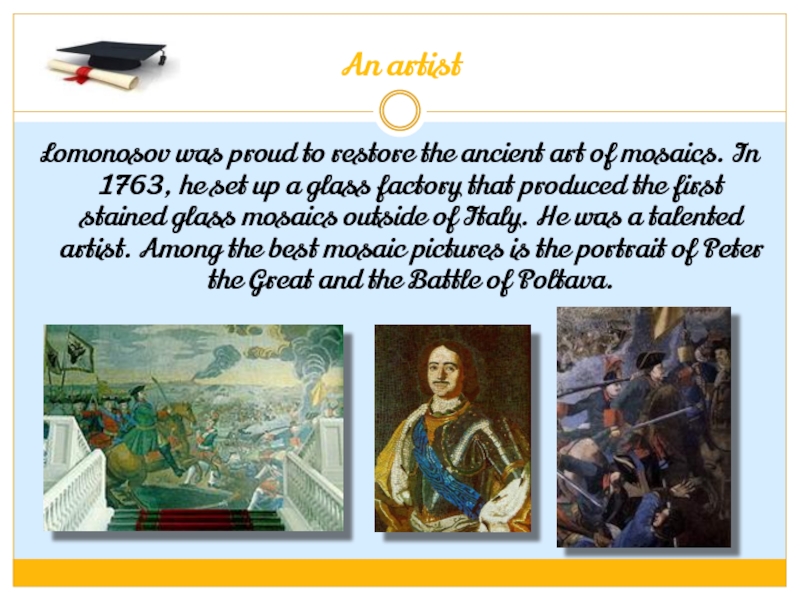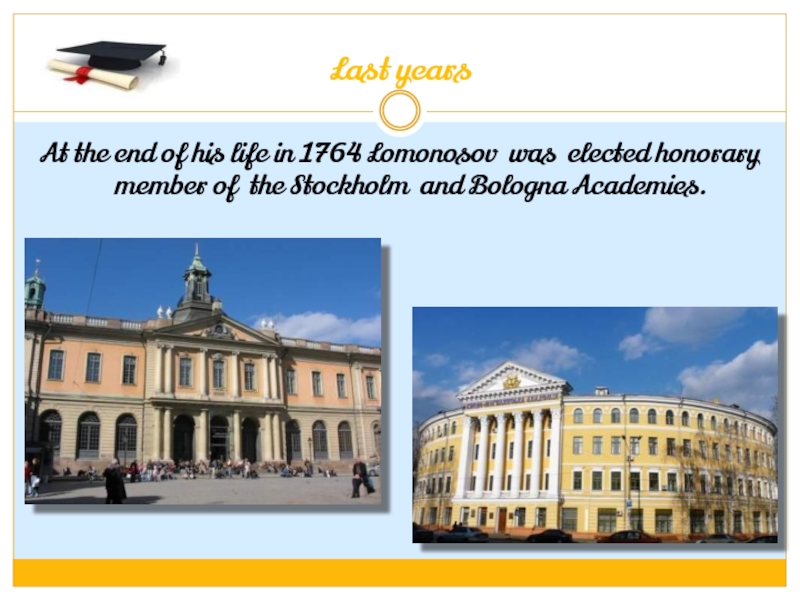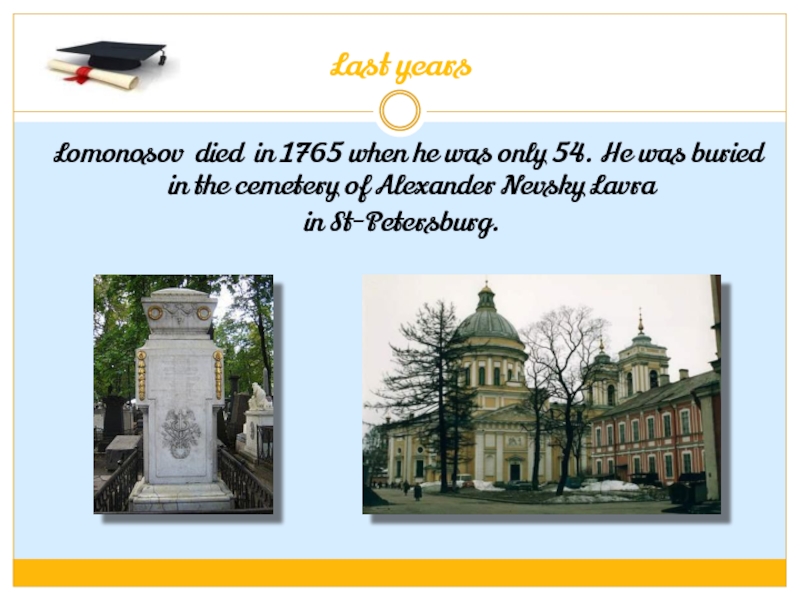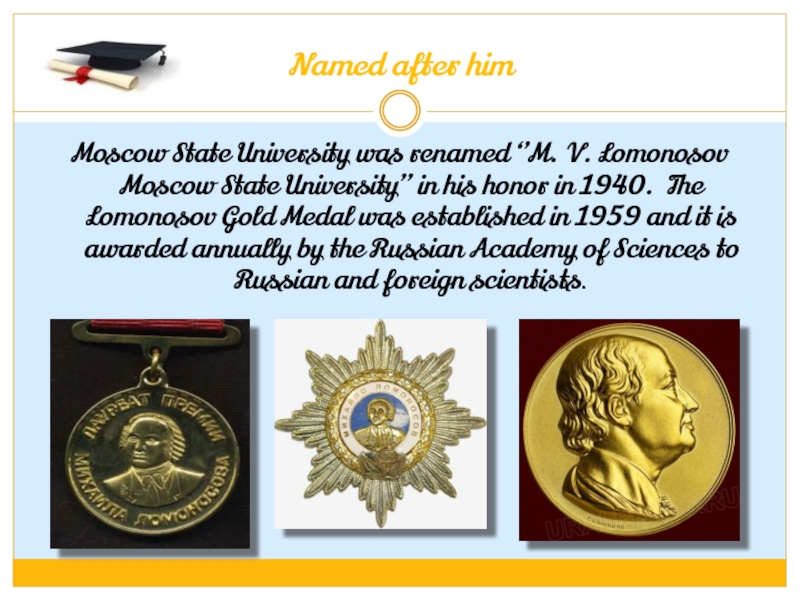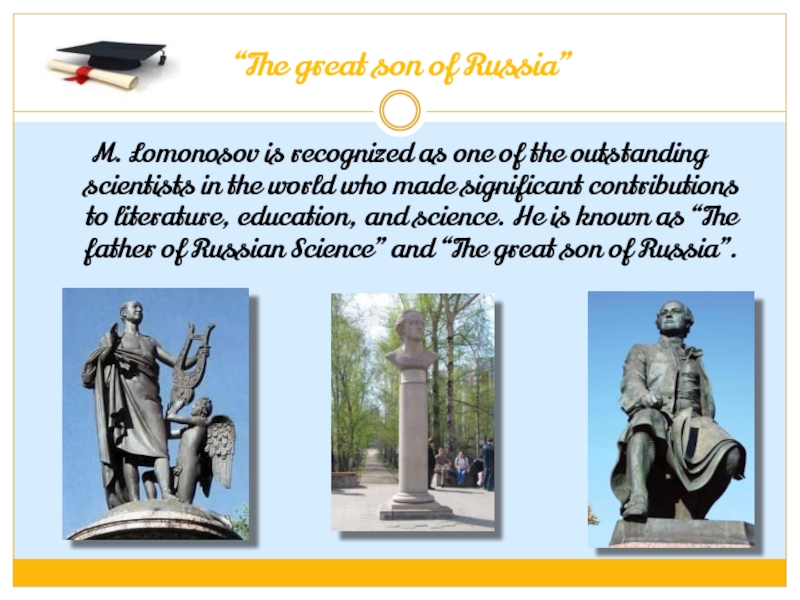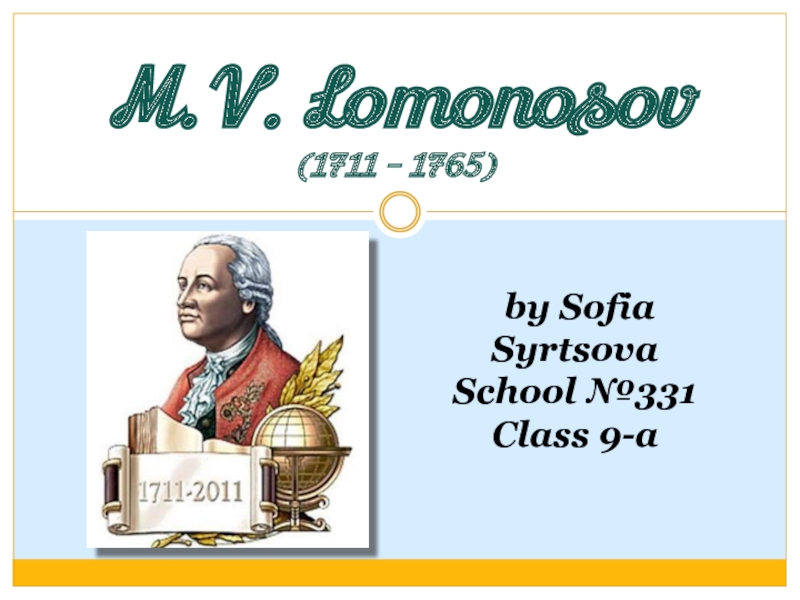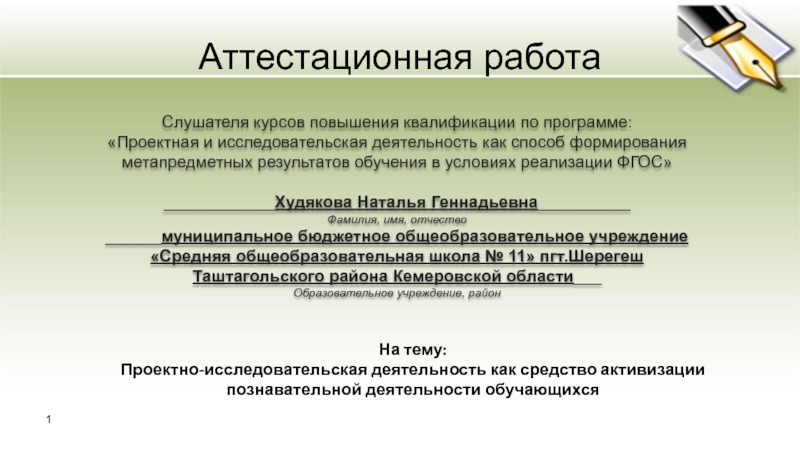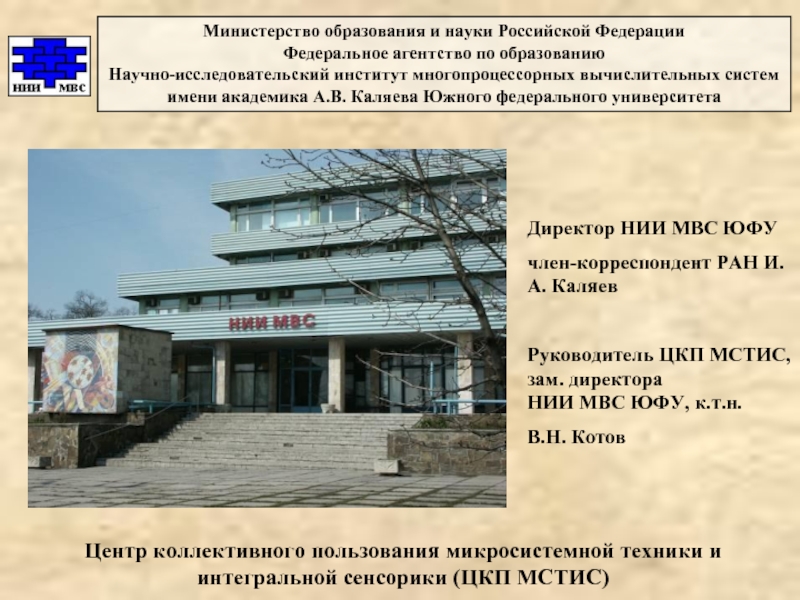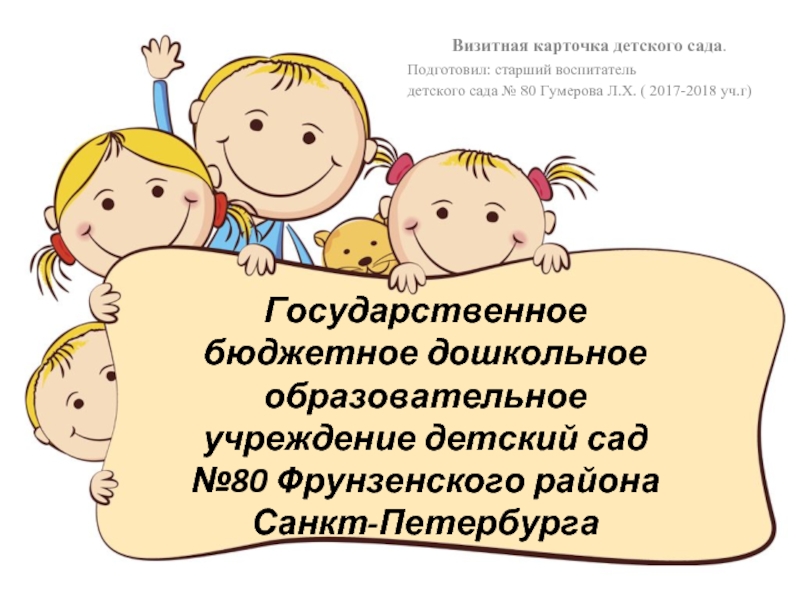2013
- Главная
- Разное
- Дизайн
- Бизнес и предпринимательство
- Аналитика
- Образование
- Развлечения
- Красота и здоровье
- Финансы
- Государство
- Путешествия
- Спорт
- Недвижимость
- Армия
- Графика
- Культурология
- Еда и кулинария
- Лингвистика
- Английский язык
- Астрономия
- Алгебра
- Биология
- География
- Детские презентации
- Информатика
- История
- Литература
- Маркетинг
- Математика
- Медицина
- Менеджмент
- Музыка
- МХК
- Немецкий язык
- ОБЖ
- Обществознание
- Окружающий мир
- Педагогика
- Русский язык
- Технология
- Физика
- Философия
- Химия
- Шаблоны, картинки для презентаций
- Экология
- Экономика
- Юриспруденция
M.V. Lomonosov презентация
Содержание
- 1. M.V. Lomonosov
- 2. M. Lomonosov Mikhail Vasilievich was the
- 3. Early years He was born in 1711
- 4. Early years Misha often went with
- 5. Education In 1730, at the age
- 6. Education His first years of study
- 7. Education In 1736, Lomonosov was awarded a
- 8. Return to St-Petersburg In 1745 Lomonosov was
- 9. A physicist He formulated the main principles
- 10. An astronomer He invented the reflecting telescope.
- 11. A chemist Lomonosov was the first person
- 12. A geographer He tried to find a
- 13. An artist Lomonosov was proud to restore
- 14. A poet Besides, M. Lomonosov wrote poetry
- 15. Last years At the end of his
- 16. Last years Lomonosov died in
- 17. Named after him Moscow State University was
- 18. “The great son of Russia” M. Lomonosov
- 19. (1711 – 1765) M.V. Lomonosov by Sofia Syrtsova School №331 Class 9-a
Слайд 2M. Lomonosov
Mikhail Vasilievich was the first Russian natural scientist of
world importance and “Star of world science”. He was actively engaged in physics, chemistry, astronomy, geology, meteorology, and navigation. He brought the most advanced scientific theories to Russia and advanced original ideas.
Слайд 3Early years
He was born in 1711 in the village of Denisovka
near Arkhangelsk (later renamed Lomonosovo in his honor). His father, Vasily Dorofeyevich Lomonosov, was a prosperous peasant fisherman.
Слайд 4Early years
Misha often went with his father to the White
Sea and to the Arctic Ocean. At an early age Lomonosov was eager to learn and read every book he could find.
Слайд 5Education
In 1730, at the age of 19 the young man
left his home and went on foot to Moscow where he managed to enter the Slavonic-Greek-Latin Academy by falsely claiming to be a priest’s son.
Слайд 6Education
His first years of study were difficult. He lived on
three kopecks a day, living off only black bread and kvas, but Mikhail worked hard and made great progress. He completed a twelve-year study course in only five years, graduating at the top of his class.
Слайд 7Education
In 1736, Lomonosov was awarded a scholarship to Saint- Petersburg State
University. He was rewarded with a two-year grant to study abroad at the University of Marburg, in Germany where he quickly mastered the German language, and in addition to philosophy, seriously studied chemistry.
Слайд 8Return to St-Petersburg
In 1745 Lomonosov was made a full member of
the Russian Academy of Science, and named professor of chemistry. In 1748 he established the first chemistry laboratory. He was eager to improve Russia’s educational system, and on his initiative in 1755 the Moscow University was founded.
Слайд 9A physicist
He formulated the main principles of one of the basic
laws of physics — the law of conservation of matter and motion. He also suggested the wave theory of light, contributed to the formulation of the kinetic theory of gases.
Слайд 10An astronomer
He invented the reflecting telescope. However, this invention was not
published until 1827. Lomonosov was the first person to hypothesize the existence of an atmosphere on Venus based on his observation of the transit of Venus of 1761 in the small observatory near his house in Petersburg.
Слайд 11A chemist
Lomonosov was the first person to record the freezing of
mercury. Believing that nature is subject to regular and continuous evolution, he demonstrated the organic origin of soil, peat, coal, petroleum and amber.
Слайд 12A geographer
He tried to find a short sea route from the
West to the East across the Arctic Ocean. He theoretically predicted the existence of Antarctica, got close to the theory of continental drift and invented sea tools which made writing and calculating directions and distances easier.
Слайд 13An artist
Lomonosov was proud to restore the ancient art of mosaics.
In 1763, he set up a glass factory that produced the first stained glass mosaics outside of Italy. He was a talented artist. Among the best mosaic pictures is the portrait of Peter the Great and the Battle of Poltava.
Слайд 14A poet
Besides, M. Lomonosov wrote poetry (odes and verses). The first
Russian grammar was written by him as well. He published the History of Russia in 1760.
Слайд 15Last years
At the end of his life in 1764 Lomonosov was
elected honorary member of the Stockholm and Bologna Academies.
Слайд 16Last years
Lomonosov died in 1765 when he was only
54. He was buried in the cemetery of Alexander Nevsky Lavra
in St-Petersburg.
in St-Petersburg.
Слайд 17Named after him
Moscow State University was renamed ‘’M. V. Lomonosov Moscow
State University’’ in his honor in 1940. The Lomonosov Gold Medal was established in 1959 and it is awarded annually by the Russian Academy of Sciences to Russian and foreign scientists.
Слайд 18“The great son of Russia”
M. Lomonosov is recognized as one of
the outstanding scientists in the world who made significant contributions to literature, education, and science. He is known as “The father of Russian Science” and “The great son of Russia”.
